Decompression. Not a dangerous one. More like old air leaving a vault that’s just been opened. An asteroid. A meteor? No, a comet! Hurtling through space. Empty space? An empty patch. But the kind of empty patch that makes the rest of it feel just as empty. Empty, except for this one thing. A ship. Where’d it come from?
Oh! Another thing! A space station.
Sheepishly entering the screen as if it’s the first day of class. It dares to be there. Under the brass and the strings emboldening its existence. A space station, the titular one, as you’re soon informed by text. The last holdout of something in nothing. It’s a pebble, and not a particularly smooth one, that wants to skim across an ocean but, aware of its breccia-like composition, says not “I’m doing this!” but, “I’m doing this?,” and only when it can eke out the affirmative does it earn the jump cut that proves, in its details, it is not an “I” but a “we,” tirelessly working to make sure the pebble can make, if not all its skips, then at least the next one.
Since it first aired, I have regularly taken a strange comfort in the first thirty seconds of Star Trek: Deep Space Nine’s opening credits.
There’s a comet, a big scary thing that I usually have to google to confirm that it is in fact a comet. There’s a void, the feeling that no one else is there who understands. And then there’s a station, which, since it’s my imagination, is me. Or who I hope to be. Something brave enough to stand against, well, all of that.
Star Trek: Deep Space Nine premiered thirty years ago this year with its pilot, “Emissary.” In it, Commander Benjamin Sisko, a human, inherits the Starfleet half of a formerly Cardassian space station now shared with once-oppressed and horrifically traumatized Bajorans along with a buzzing enclave of Ferengi who, with some convincing, keep that split from being a clean fifty-fifty. While this brief elevator pitch omits other aspects of Deep Space Nine’s glorious diversity—a Changeling, a Trill, and, my favorite, an apparently chatty Lurian among it—it provides enough of a foundation to talk about the central dramatic question of this specific episode: what is the Ben Sisko of it all?
The first half of the feature-length episode suggests it’s Sisko’s inability to fit within Starfleet’s binary options, instead choosing an “in-between” that his commanding institution abhors. As such, the Federation, through the influence its rank hierarchy turns hegemonic, sorts Sisko into one choice or another, usually much to his discomfort. Initially, Sisko doesn’t know if he wants the Deep Space Nine assignment, or a life that offers more stability in exchange for possibly lowering the ceiling on his own potential. As a result, Starfleet chooses for him, and they order him to the space station, if for no other reason than to fill a vacancy in a tough assignment. Later, Sisko doesn’t want to meet with Jean-Luc Picard, the de-assimilated captain who, as Locutus, killed his wife, but he lacks the necessary rank to avoid it, so he takes the meeting, not because he wants to, but because he knows, now, that he’s taking the Federation’s exam, for which every question has just two choices: (a) follow orders, or (b) resign. Even the uniforms in the pilot’s first three quarters evoke the persistence of a binary: Federation crew are wearing one of two outfits, the black-yoked tunics seen frequently in Star Trek: The Next Generation or the division-shouldered jumpsuits that would become commonplace in the early seasons of Star Trek: Deep Space Nine and throughout Star Trek: Voyager.
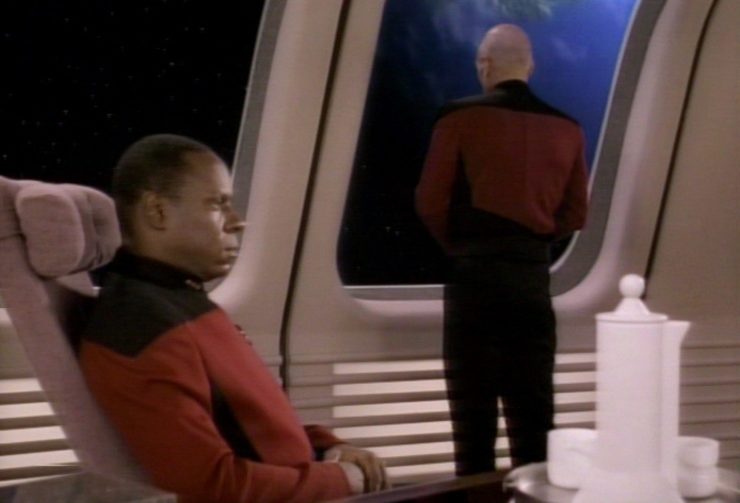
This take-it-or-leave-it Starfleet binary even unfolds past the episode and into the way fans talked about Star Trek: Deep Space Nine around the time of its premiere. As captured by the documentary What We Leave Behind, early fan mail included critiques that Deep Space Nine somehow wasn’t Star Trek, as if Star Trek is part of a binary that something either is or is not. One such letter, read by Deep Space Nine’s Nana Visitor and Colm Meaney, said, “The whole idea of Star Trek is the idea that they would be exploring strange new worlds and going where no man has gone before, not bumming around a space station talking about their feelings.” This assumes there are qualities that make a narrative “Star Trek,” criteria like consistent active movement in a spaceship and lack of emotional discourse, and should a text not be able to check off those boxes, it can’t possibly be considered part of the franchise. There is no third option.
There is no nth option. There is no option that defies enumeration all together. There is no room, either within the text or outside of it, for what Benjamin Sisko needs. And I know. I needed it, too.
Depression. At age fifteen, this is not a word I knew. Or at least, not one I knew to apply to myself. As such, I can’t help but gaslight myself into thinking it wasn’t that bad. Sometimes, those of us who left smaller hometowns for big cities wonder about those who chose to stay, but I get it. There’s a comfort in knowing a map down to its fibers. You never have to see the void surrounding the space station. The station is all there is. There is no outside, and certainly no emptiness. I left my hometown—Knoxville, Tennessee—at age fifteen. It wasn’t my choice. At age fifteen, you go where your parents go. Or at least, I did. At age fifteen, I left my hometown with a brain filled with Star Trek: Deep Space Nine. So when my new home, New York City, came into view after a twelve-hour car ride North, I saw what Ben Sisko saw in “Emissary”: an assignment never asked for. But the choice was clear: (a) go where those on whom you are dependent take you, or (b) risk it all on your own. At age fifteen. So I went. That was 9/9/2001.
Comet. Void. Space station.
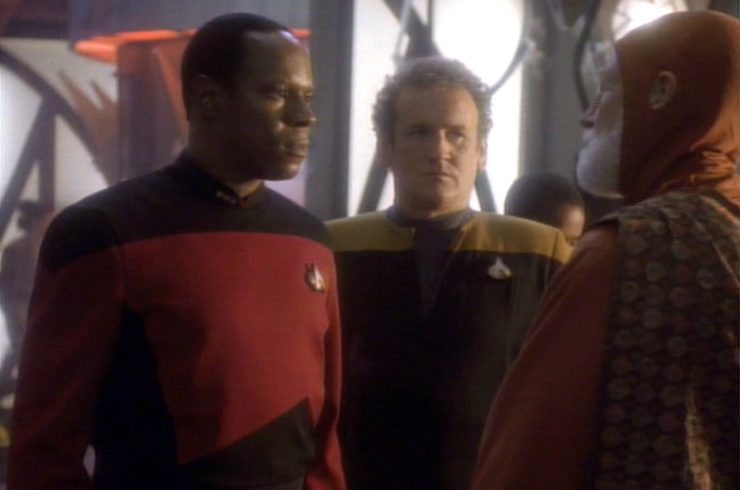
All of this is what makes the Bajoran monk on Deep Space Nine’s Promenade in “Emissary” so revolutionary. He appears, and prompts Sisko to enter the temple. “The Prophets await you,” says the monk. This comes on the heels of a series of Starfleet orders that have dictated the course of Sisko’s life. Still, Sisko does not offer a binary yes/no answer. Instead, he says, “Another time, perhaps.” Likely coming from a place of politeness, the response still reveals a character who is open to the future containing a multitude of options, not just the ones Starfleet has efficiently laid out for him. Hearing this, the monk does not say “Okay” or “No, you have to come now;” he repeats Sisko’s words back to him: “Another time.” While showing agreement, it’s a specific way of affirming Sisko’s reply. Here, the monk also allows Sisko to be, as-is, with nothing else added beyond his words. Of course, this is because the monk has at least an inkling of Sisko’s importance as the Emissary, but, read through the lens of binary choices, this is an early place where a glimpse of the “in-between” is invited into the world through a holy interaction.
This isn’t to say that, from this point forward, Sisko forges his own path, throwing Starfleet binaries to the wind. He’s not there yet. Though he doesn’t know it at the time, he needs Kai Opaka to direct him inward. It is she who knows that Sisko has all the tools within, in the different existences he lives simultaneously, to break from Starfleet’s river, whose rapids keep ripping him through a series of forks that, each time, leave him less fulfilled than before. When the Kai guides Sisko to the Prophets, he is set on a journey not of picking one option against another, but toward seeing that the “in-between” Sisko is so intent on embracing actually holds multitudes simultaneously.
Thus, it is no surprise that the central turn of the episode happens inside the Wormhole, a space that is by definition “in-between.” It is not part of the binary “here” or “there.” It’s a place where, much like Sisko’s “in-betweens,” one should not be able to land—but Sisko can. In the Wormhole, the Prophets speak to Sisko again, in an attempt to call out the toxicity of a linear existence. It is in this philosophical conversation that we see Sisko recognize his love of a plethora of options as rooted in baseball. Sisko says, “Every time I throw this ball, a hundred different things can happen in a game… The point is, you never know… in the end, it comes down to throwing one pitch after another and seeing what happens.” This analogy, while wholesome in its romanticization of baseball, doesn’t quite achieve Sisko’s full catharsis. Breaking the binary by simply adding more choices only superficially understands the task at hand. Such dismantling happens when we stand outside the moments of life/death, do/do not, self/other, big/small on the connective tissue between those and all things, the very bridges that are often invisible to us, and see that these perceived points are both life and death, self and other, big and small, and that we are capable of containing both of every binary, and all of every non-binary. From within the Wormhole, Sisko takes the Prophets to the scaffolding around his most significant life/death moment—the loss of his wife, Jennifer—only to learn that he does, in fact, exist there, as well as in the present, and that, perhaps, Sisko of the present can nurture Sisko of the past.
Reflection. I live there, too. Two days later. 9/11/2001. There was no “Jennifer,” for me, on that day. Either in the Twin Towers or anywhere else, thankfully. But that isn’t to say there wasn’t loss. Two days prior, my home changed. Two days prior, my world shrank from a lifetime of friends and familiarity to two parents who were, like Starfleet to Ben Sisko, something I both resembled and rejected. There was work, but it was supposed to be understandable work. On 9/11, the work became incomprehensible. I don’t mean to make abstract a loss that was and is very concrete. It can be measured in terms of human lives. But, in my case, the loss was also existential. It resulted in three years of silence as I craved an “in-between” I knew had to be there, but didn’t fit the structure surrounding me. I went where pretty much anyone with more authority told me to go. Even as I entered my twenties and the shock of mass murder two days after I left my known world wore down enough to allow me to speak and form meaningful connections, I still felt like a marionette on the ends of strings powerful enough to be those from the opening melody of Star Trek: Deep Space Nine, not emboldening my existence but controlling it.
Comet. Void. Space station. Me?
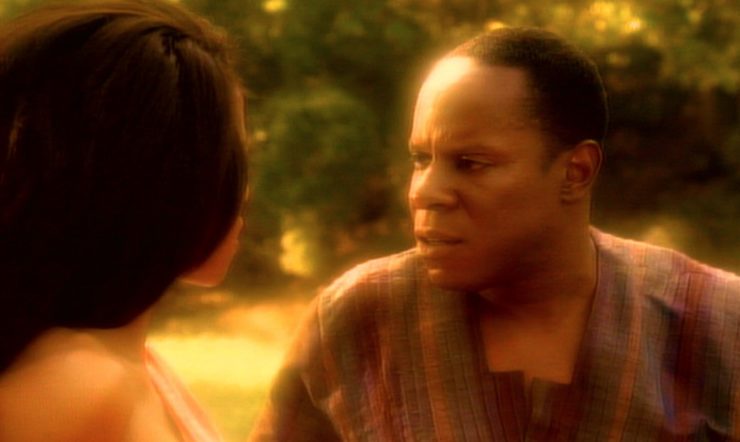
Upon taking the Prophets to the scene of his wife’s death inside the Wormhole, Sisko admits that “I see her like this every time I close my eyes. In the darkness, in the blink of an eye, I see her like this.” It is then that the Prophet presenting as Jennifer tells Sisko that nothing from personal experience helped him prepare for this specific outcome. And, no, nothing did, which is why Sisko exists in that moment. It betrays the pitch-after-pitch, experimental game of baseball Sisko thought he was living. It betrays linearity. The answer isn’t to ball all this up and throw it away, though. It’s to simply be. To exist. To know that existence is not just non-linear but non-binary. Sisko, like all humans, contains the capacity to exist across many pasts, choices, and futures. All of those existences can inform one another. We exist in dark recesses and hopeful speculations, and you are, like any good Motel 6, leaving a light on for you. It is upon this realization that the “Emissary” script notes the parenthetical: “And [Sisko] finally starts to grieve properly.”
Illumination. It’s bright inside the Wormhole. Maybe because it has to light some pretty dark places. Twenty-two years ago feels like a long time ago, but, to the me that is still there, it’s immediate. Since that me is also in today’s self, they’ll say hi whenever I try to people-please or shut down or do a variety of habits that feel necessary to that person. Part of my process now is to try and synthesize their best qualities—their thoughtful nature, their curiosity, their quiet musings—with all the other selves that have grown since, and still have yet to arrive. It is also to let the existences beyond that one comfort it, tell it that what felt once like such a small “in-between” has grown into a full Non-Binary life that feels more whole with every new node it generates in its network. That isn’t to suggest I’m on a journey of toxic positivity, paving over unprocessed grief just to keep a smile on my face. In fact, the lessons of the wormhole combat this by design. The toxicity in positivity rests in its linearity, in the ways we push forward into saccharine sweetness as if there aren’t pieces of us still living valid existences in trauma. This is not where the Prophets lead Sisko, or me. It’s toward never forgetting, but not in the jingoistic sense. Rather, the preservation is of our selves that still need us.
Comet. Void. Space station. Me.
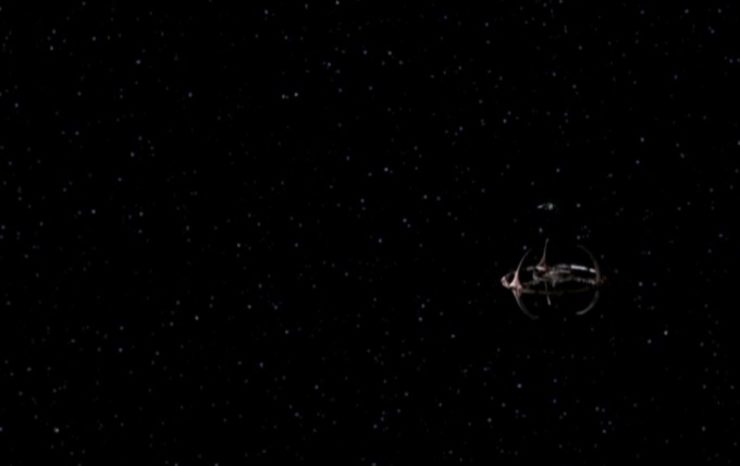
Decompress on, friends. 2023 requires it. From 2016 on, I received a series of White Elephant Christmas gifts—mugs, totes, the like—that all say some variant of: “Worst Year Ever.” Every year. And it makes sense: emboldened authoritarianism, a global pandemic, the gutting of reproductive health, attacks on Trans lives, attacks on Black lives, attacks on Jewish lives, attacks on the intersections of those lives and too many more. It is a time where we would, understandably, like to stop seeing Jennifer die. But as we move not forward but outward, Sisko’s non-linear, non-binary arc in “Emissary” can help. It can remind us that we leave ourselves here, and we carry ourselves onward. We exist before all of this, too, not in a Funko Pop! of a nostalgic character, but in that self that still survives so as to be proud of the selves that have grown out of it. We’re here, but we’re not stuck here, because we’re also everywhere else.
Magnify that by 7.888 billion people, the most recent calculation of the population of Earth, and that is an infinitude of places. If the scale of that seems daunting, it’s okay. “Emissary” can help there, too. The final act of the episode, once Sisko has deconstructed his own perceived linearity, is full of organic combining. A Federation ship pulls an enemy Cardassian warship out of the Wormhole. Sisko and Picard shake hands and find some semblance of peace. Connections begin to form among the crew. Even the Starfleet uniforms, once separated into a binary of “new” and “old,” are now as one. Tend to the self, and the rest unfolds from there. That work builds the confidence that the many yous within you are cheering you on, holding space for you in the “in-betweens” from which to love more selves into existence. In so doing, for Sisko and for us, the result is a simple outstretched hand, looking for other outstretched hands that dare to be there, never fearing to end, as “Emissary” does, on an ellipsis.
Comet. Void. Space station. Me…
Jonathan Alexandratos (they/them) is a New York City-based writer and Trekkie. Their work primarily focuses on toys and the ways they function as text.










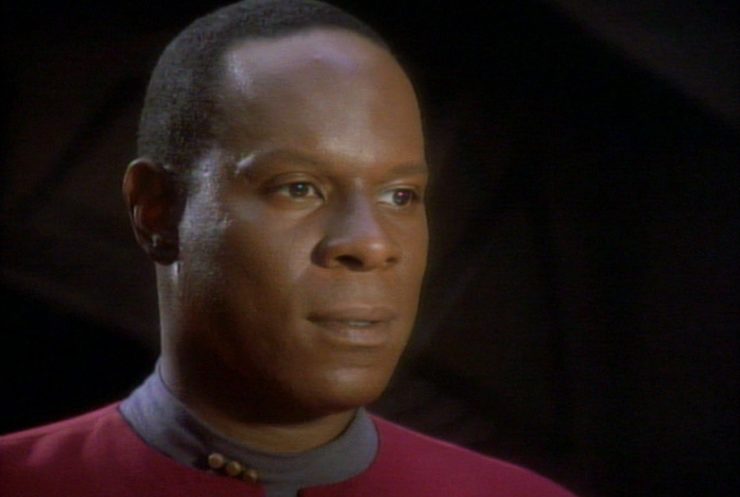
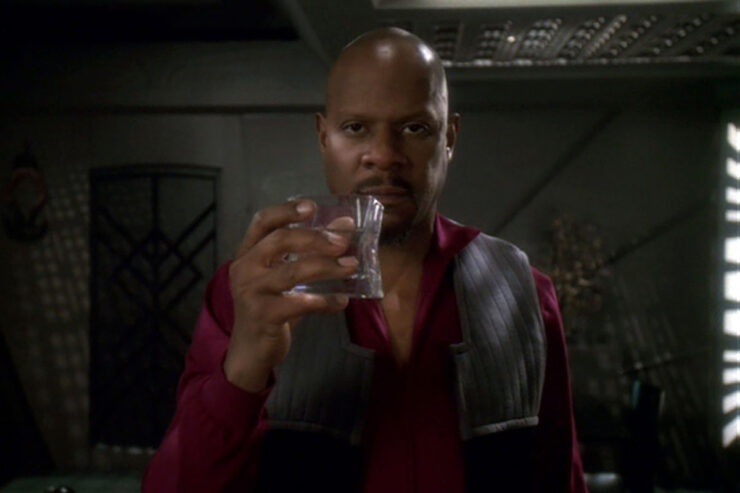
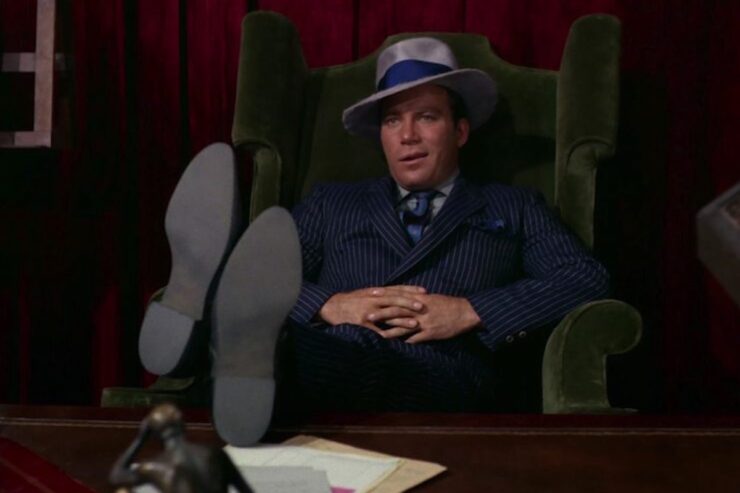
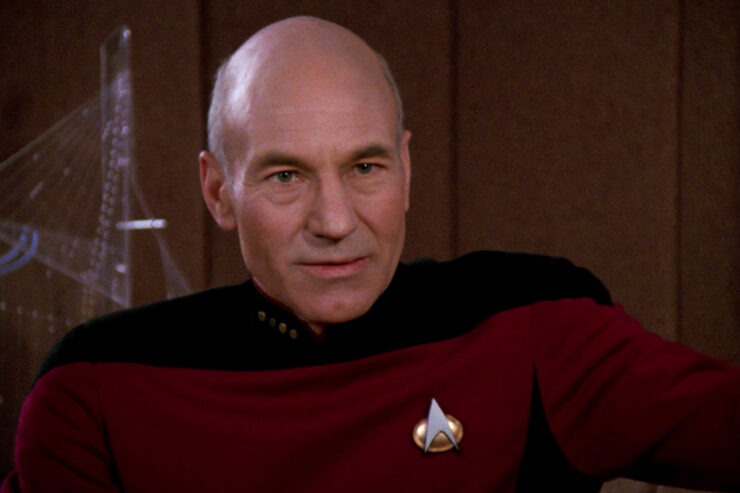
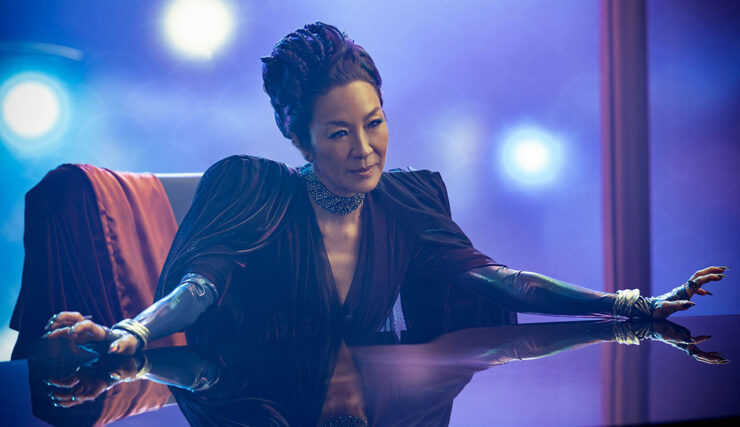
Thank you for this compelling and heart-felt essay. It made me see that episode in a whole new light.
Thank you, Jonathan, for this excellent piece.
—Keith R.A. DeCandido
Beautiful and thought provoking. I’m used to hearing about non-binary only in terms of gender, but to see it expressed just in terms of personhood and life experience is a profound thought I wasn’t expecting this morning. Thank you.
Wow! I am struck by how eloquently you described and deconstructed the episode the way you did. The whole subject of binary /non-binary struck a chord in me. A whole new way to look at the episode and myself as well. Thank you
Fair enough, but later on even the Prophets and the Pah-wraiths form a Manichean binary, and seem to want (in at least one episode, “The Reckoning”) a definite victory for one or the other.
—and if it is to be science-fiction, one must contend with actual, definite , ‘this is so or it is not’s. Yes, the entire Universe, or all of them, may be the probabilistic epiphenomena of a universal wave-function…but either you’ve got one that accurately reflects what is observed or you don’t.
Finally, though no one person’s narrow definition of what Star Trek were should be controlling, and that’s unlikely to stay static if it’s to survive, an entity without any definition at all were likely also to lack attraction. For me, Star Trek and science-fiction are most attractive as Enlightenment propaganda, that we could live better and (pacem Capt. Malcolm Reynolds) be better, aided by knowing more about the universes and how they work, and altering it and perhaps us—very different to earlier conceptions of humanity doomed to suffer and best-off trusting (yes) prophets over our ‘own heart and own understanding’. I felt that Deep Space 9 did in fact go off the rails at times because it started to strain Clarke’s Law and act as if any gods were ever real….
Wow, beautiful writing that can speak to so many people. I love that you found IDIC in Sisko’s journey through self-discovery in the intersectionality of it all. This will make DS9 a totally different viewing experience – for me the religious/Emmisary theme was not relatable but your words showed me a new view. Take care.
This is stunning writing.
I dearly hope and pray you are making a living with your obvious, stunning talent for writing; if not, you should, and right away. You caused me to think about myself, Star Trek in general, DS9 and this episode in particular in ways I never did before. Thank you for sharing your own personal journey so eloquently; maybe I can find some things in it to help me as I continue on mine.